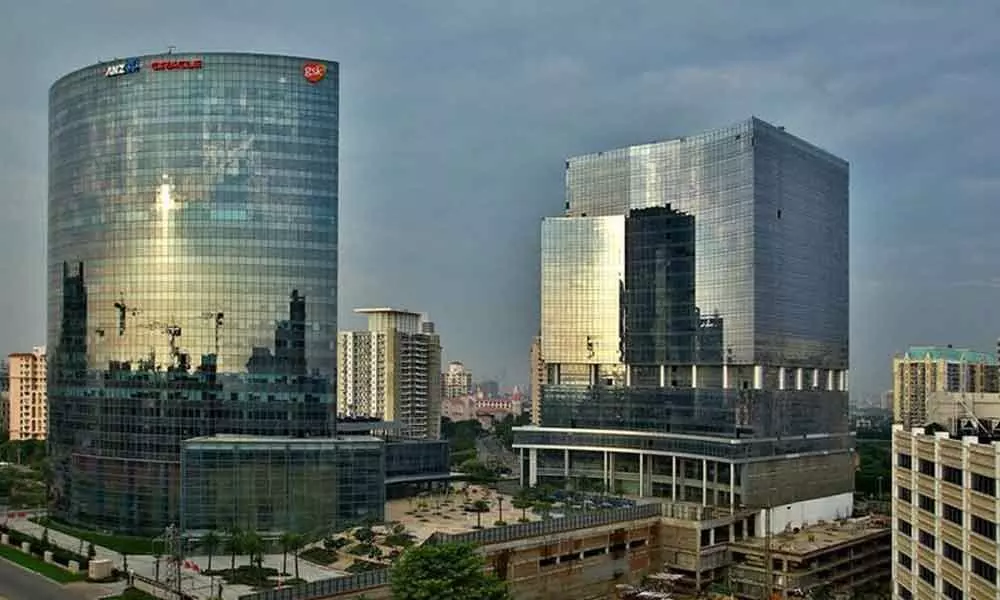Top things to watch in commercial real estate in 2022
Real estate sector in India is expected to reach $1 trillion in market size by 2030, up from $200 billion in 2021 and contribute 13% to the country’s GDP by 2025
image for illustrative purpose

While the commercial real estate (CRE) industry sustained setbacks during the pandemic, its outlook remains positive in 2022. CRE leaders have a unique opportunity to lead both their companies and the sector as the factors that held back growth in 2021, such as labour shortages, supply disruptions, and inflation will ease in the future. With the CRE market in India expected to grow, CRE leaders must lean into technologies to make informed decisions based on real-time data, create new markets, and generate stable financial returns. According to IBEF, "Real estate sector in India is expected to reach $1 trillion in market size by 2030, up from $200 billion in 2021 and contribute 13 per cent to the country's GDP by 2025."
Pandemic driven evolution in the workspace in the last few years
Before the pandemic, it was widely assumed that workplaces were crucial to productivity, innovation, and winning the competitive landscape for recruiting and retaining talented employees. In light of the pandemic's widespread disruption over the past few years, returning to the pre-pandemic workplace seems difficult. By harnessing the best of both in-person and remote work, organizations redesigned and rebuilt procedures and practices that served as the cornerstone of an enhanced operating model. Companies began to adopt effective and innovative technology for videoconferencing and other types of digital collaboration to increase productivity, foster a better culture, and drastically cut real-estate expenditures.
Key trends noticed during this time span
Employees were empowered to work remotely and were given the autonomy to adapt their work to the correct setting during and even after the pandemic. When they migrated to remote work facilitated by modern technology, many firms maintained great productivity, improved workplace contentment, job dedication, involvement, and scored higher on markers of creativity. Companies implemented a forward-thinking mobility strategy that was adaptable, dynamic, and collaborative to attract a new generation of talent. The pandemic hastened the widespread adoption of technology that allowed businesses to conduct varied ideation on a digital medium and include ideas from throughout the enterprise through digital tools. Organizations acknowledged the pandemic's humanitarian catastrophe and re-prioritized employees' financial, physical, and mental well-being.
The 2022 outlook of CRE workspace: the shift and various adoptions
Despite the persistent Covid threat, CRE will rebound because fiscal and monetary policy will continue to be highly supportive of the industry's economic growth. Inflation pressures will be slowed with tighter fiscal policy, which may cause some brief fluctuation in the financial markets but not enough to discourage demand in commercial real estate. The CRE market will thus see an increase in values, especially for highly sought-after industrial and multifamily properties. After a slow 2021, the pace of recovery in the office sector will pick up following a strong supply/demand balance. As hybrid work becomes the new norm, office properties with amenities that promote employee collaboration, connection, and wellness will thrive.
The pandemic crisis has accelerated the need for modern, flexible, resilient office space with great services. Some of the home amenities that employees have become accustomed to will be imported into office space. It might also mean using biophilic design elements like greenery, open space, vistas of nature, soft furnishings, and warm lighting to make the office environment more pleasant and create distance between employees. Organizations could consider adopting flexible furniture and other design solutions to provide physical distance while retaining the benefits of cooperation.
Developments & innovations expected in CRE sector in 2022
In the redesigned workspace, many new sensors will play a new function to detect adequate social distancing. Motion detectors, foot traffic tracking, and other Internet-connected furniture and equipment will provide a comprehensive overview of daily operations, enabling managers and business owners to monitor productivity and adjust layouts to changing demands. A flexible workspace can be transformed into a social lounge area by rearranging a few light chairs and a table to promote productive interactions. Companies must provide an acceptable social distance between workstations so that employees may focus on production rather than worrying about getting sick.
Organizations may also add enclosures to workstations, such as transparent plastic or glass panels, which protect employees while also enabling them to interact with each other. Other important safety features include social distancing signage, hand sanitizing stations, and signs that limit the number of employees in a room. Proper ventilation is critical for limiting the spread of Covid-19 and other diseases, and having an open floor layout and large panoramic windows would significantly boost airflow in the office. Companies lacking proper windows or adequate ventilation can opt for office climate control systems for the well-being of the employees.
How is this new normal shift going to affect the configuration of the CRE sector in 2022?
Real estate value is no longer determined solely by the space and the location but rather by the convergence of infrastructure and technology to enable real estate services. Property sectors have seen inconsistent recovery, leading many CRE firms to look beyond the status quo. Putting off such a necessary change could put companies at a competitive disadvantage, if not worse. In the face of increasing consumer demands for dynamically designed and better-equipped properties, the CRE sector should use data to better understand consumer preferences and refit and realign the workspaces to make them digital, connected, and energy-efficient.
(The author is Partner at Soulcraft Solutions)

